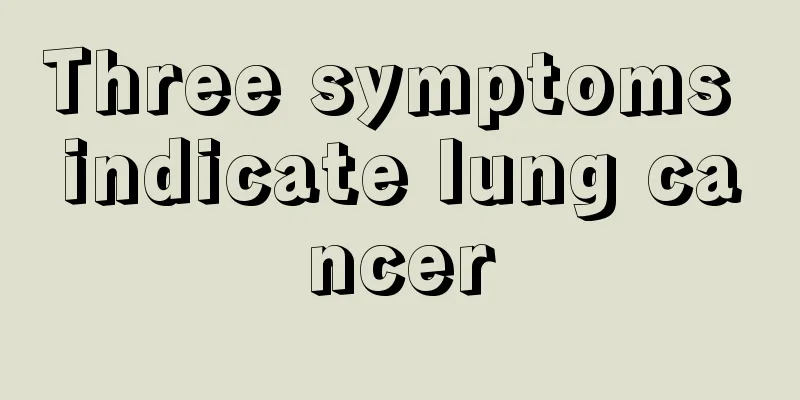What is the cause of luteinized follicles?

|
Follicle luteinization refers to the symptoms of infertility in women, but what is the cause of follicle luteinization? Many female friends need to understand this. Because fertility issues are a serious problem for family life, many couples divorce because of this reason. Therefore, female friends attach great importance to this problem, so once the cause is found, timely treatment can be carried out. Generally speaking, this situation can be improved, so we need to pay more attention to it. 1. Central endocrine disorders. Ovulation is a complex process involving the coordinated action of multiple hormones. Central endocrine disorders can directly affect the growth and development of follicles and the occurrence of ovulation. Studies have shown that the ovulation process is stimulated by the peak secretion of LH/FSH, mainly by LH. When the central endocrine system is disturbed due to various reasons, the LH peak secretion level is insufficient, and the LH secretion amount does not reach the threshold, it cannot stimulate the biochemical and histological changes that lead to the digestion and rupture of the follicle wall. However, it can lead to the restart of meiosis and luteinization of follicular cells, secretion of progesterone, and the "pseudo-ovulation" phenomenon in which the follicle is not released but the progesterone level is elevated. However, some studies have reported that LUFS is not related to LH levels. Other studies have reported that the effect of LH during LUFS is due to a decrease in the amount of LH receptors. Luteinization of follicles 2. Local obstacles. Endometriosis and pelvic inflammatory disease can cause pelvic adhesions, resulting in non-rupture of follicles and anovulation, but endogenous LH can promote luteinization of follicular cells. Studies have shown that it occurs after ovarian surgery and is mainly related to sparse membrane-like adhesions on the surface of the ovary. In addition, oophoritis or even subclinical oophoritis is also a local factor that causes thickening of the ovarian epithelium and leads to the occurrence of LUFS. 3. Enzyme or kinase deficiency or defect or prostaglandin deficiency. The production of enzymes is also the result of the action of LH and FSH. Insufficient LH affects the increase of CAMP, thereby reducing the activity of fibrin and plasminogen activator in the ovaries, which can reduce the activity of plasminogen on the follicular cells before ovulation, affecting the dissolution of fibrin and the self-function of the follicular wall. Proteolytic enzymes also play a role in follicle rupture, and the lack of these enzymes inhibits ovulation. To sum up, this is the reason for luteinization of follicles. We understand that this is closely related to the conditions of the female body. However, according to the development of modern medicine, it can be treated later. It is necessary to change the ovulation situation in women and supplement some substances that are lacking in the body. Eat more foods rich in vitamins to supplement nutrients. |
<<: Why is it that I can’t breathe?
>>: How to completely solve premature ejaculation?
Recommend
Three highs and heart rate
The heart rate should not be lower than 60 beats ...
Symptoms and treatment of intrahepatic bile duct stones
Many people do not understand what intrahepatic b...
Analysis of symptoms of ovarian cancer
Hello everyone, today we have prepared some knowl...
If lung cancer has spread, will it be contagious to other people?
The spread of lung cancer will not infect people,...
Which habits can cause prostate cancer? Revealing five lifestyle habits that are prone to prostate cancer
The prostate is a very important sex gland organ ...
What to do if there are bugs in the house
Bugs can get into any hole. The less willing you ...
How to remove oil stains from your body
Having a fresh and beautiful image will always le...
There is a dull pain on the left side of my abdomen
A phrase girls often say is: "My stomach hur...
How to prevent lung cancer most effectively? Prevention of lung cancer should start with daily diet
To prevent lung cancer, we should first interfere...
How to relieve brain fatigue
In our daily lives, we always feel physically tir...
Will eating hot pot make you fat?
Hotpot is a favorite of many people. There are ma...
How to prevent calf muscles from growing
Some bad habits can easily cause the calves to be...
What aspects of diet should patients with fibroids pay attention to
What aspects of diet should patients with fibroid...
What to do with hydronephrosis
Hydronephrosis is a common condition in our lives...
Difference between hysteroscopy and surgery
In daily life, when women suffer from some gyneco...









